Grocery is a recurring necessity for every person in today’s generation, similar to food essentials. Nevertheless, the old methods of grocery purchasing require in-store shopping, which wastes a lot of time. This is where shopper apps like Instacart come into the frame. Presently, the grocery delivery sector stands at a value of $600 billion and is projected to rise in the coming years. Moreover, these applications are an excellent money-making source for any person looking for income-generation opportunities.
What is Instacart?
Instacart is a top grocery delivery marketplace in the US, offering deliveries and pick up on the same day via a large number of stores. Consumers can purchase from more than 1400 retailers and 80,000+ regions, although Instacart does not manage the merchandise of the stores registered on Instacart. This is an added advantage for Instacart users, as they can shop from different stores at a time, and every store has its custom cart, costs, and minimum ordering value.
List of Trending Apps Like Instacart
1. DoorDash
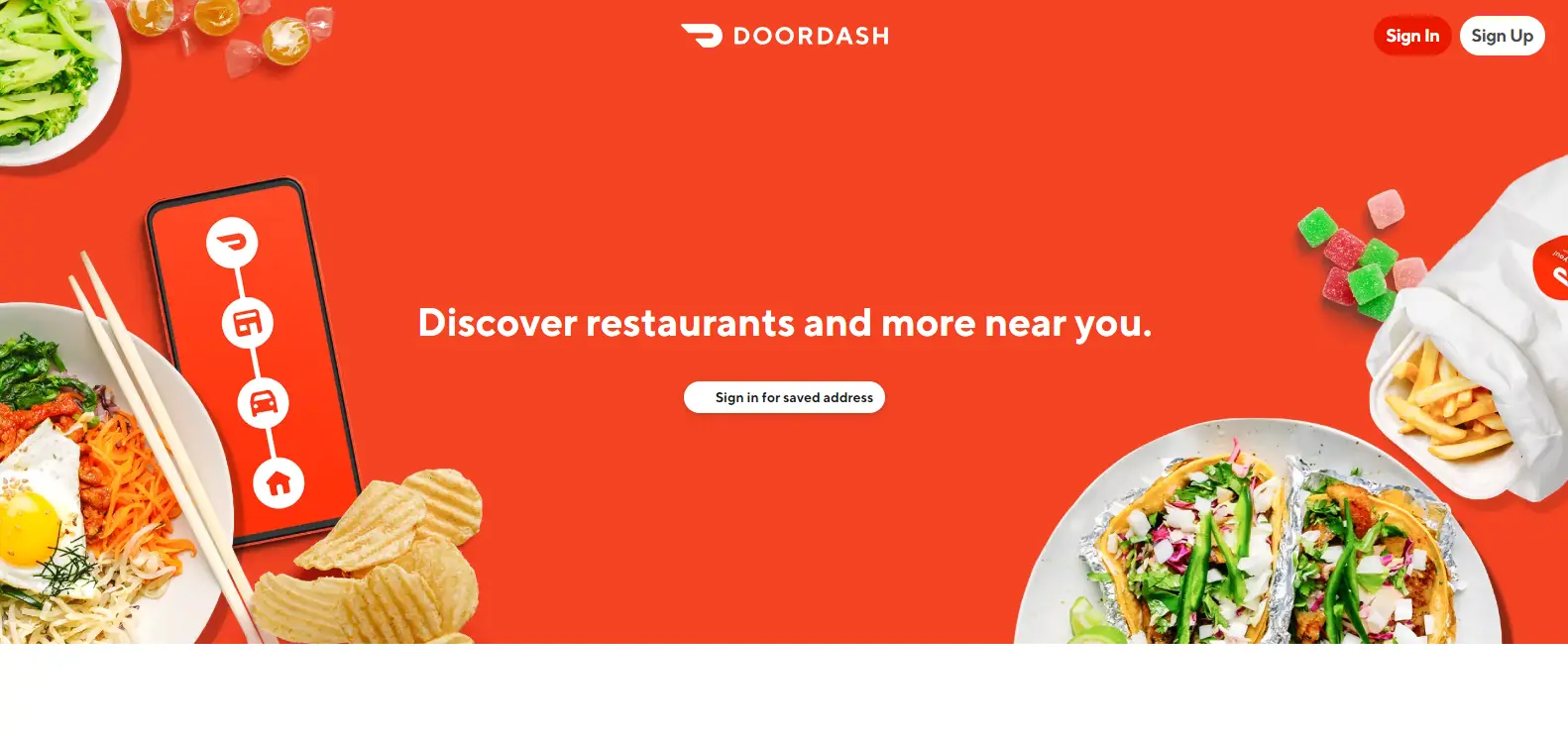
DoorDash is an effective player in the industry, posing as a direct competitor to Instacart's delivery services. Established in 2013, DoorDash has set foot in the on-demand food delivery grounds, providing accessibility and ease to users residing in Canada and the US. This alternative to Instacart presents collaborations with several restaurants to expand its bundle of culinary choices to opt from. To distinguish itself among the contenders, it invested heavily in logistics and innovation. The organisation relies on a delivery algorithm and operates as per a fleet of drivers to guarantee timely deliveries. Besides food delivery, DoorDash has expanded via subsidiaries. When it acquired Caviar in 2019, it prioritised premium meal delivery. With this, it catered to the users who search for an upscaled eating experience. It also smoothly ventured into the grocery delivery segment through DashMart. It is a rapid solution for the ones who want a curated selection of daily household items.
2. Amazon Fresh
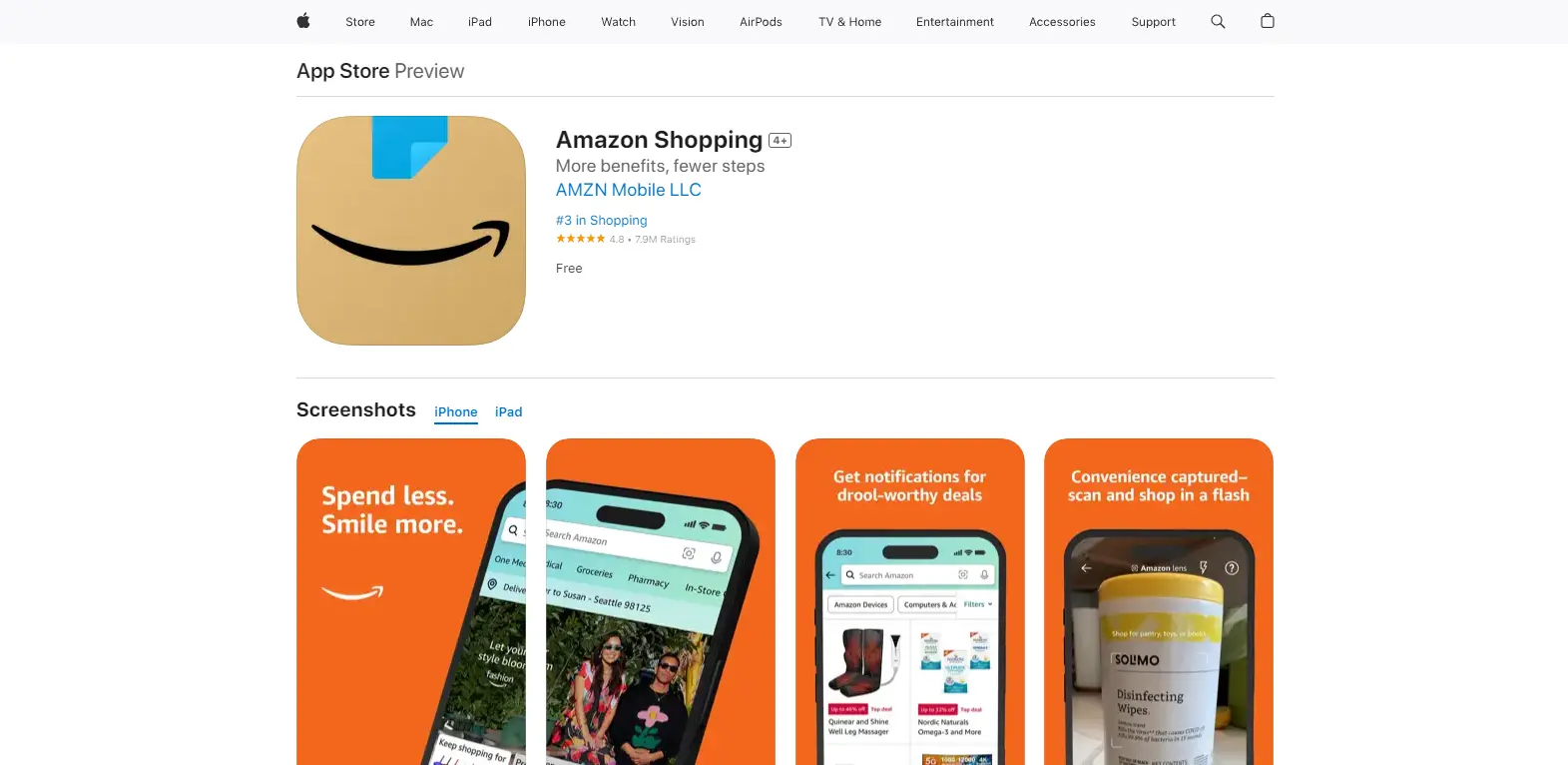
Amazon Fresh serves as a cutting-edge grocery shopping service that unites personalization and ease and is counted among ranking shopping apps like Instacart. Users can get access to over 80,000 merchandisers, including niche stores and standard national brands. This is attained through chosen lists, embedding loyalty schemes, and limited-time deals, which tend to permit new explorations for users and the augmentation of accessibility. It successfully partners with Alexa, and customers can enjoy voice-oriented shopping. It fastens the delivery process and cuts it off to two-hour express delivery with different in-store options to go through. Prime subscribers can get other benefits, such as free delivery on orders of a specific price. Some exclusive features that are a part of this service are the “Amazon Dash Cart” and “Fresh Deals” sections.
3. Thrive Market

Thrive Market is the finest app like Instacart, working as a mission-focused business obligated to social impact and well-being in day-to-day life. It is renowned for eco-friendly and GMO-based organic services at exciting deals and discounts. According to past feedback, it benefits employees in terms of retirement programs, paid time off, and health insurance, covering work-life balance as well as economic security. Thrive Market delivers organic food to your doorstep and makes your grocery shopping experience easy to go. It offers free delivery on all orders above $49. This is advantageous for frequent buyers. Users can pay a yearly amount to access items sold at a lesser rate than existing retailers. Apart from this, it donates free memberships to poor segments of the population, supporting charity.
4. Kroger
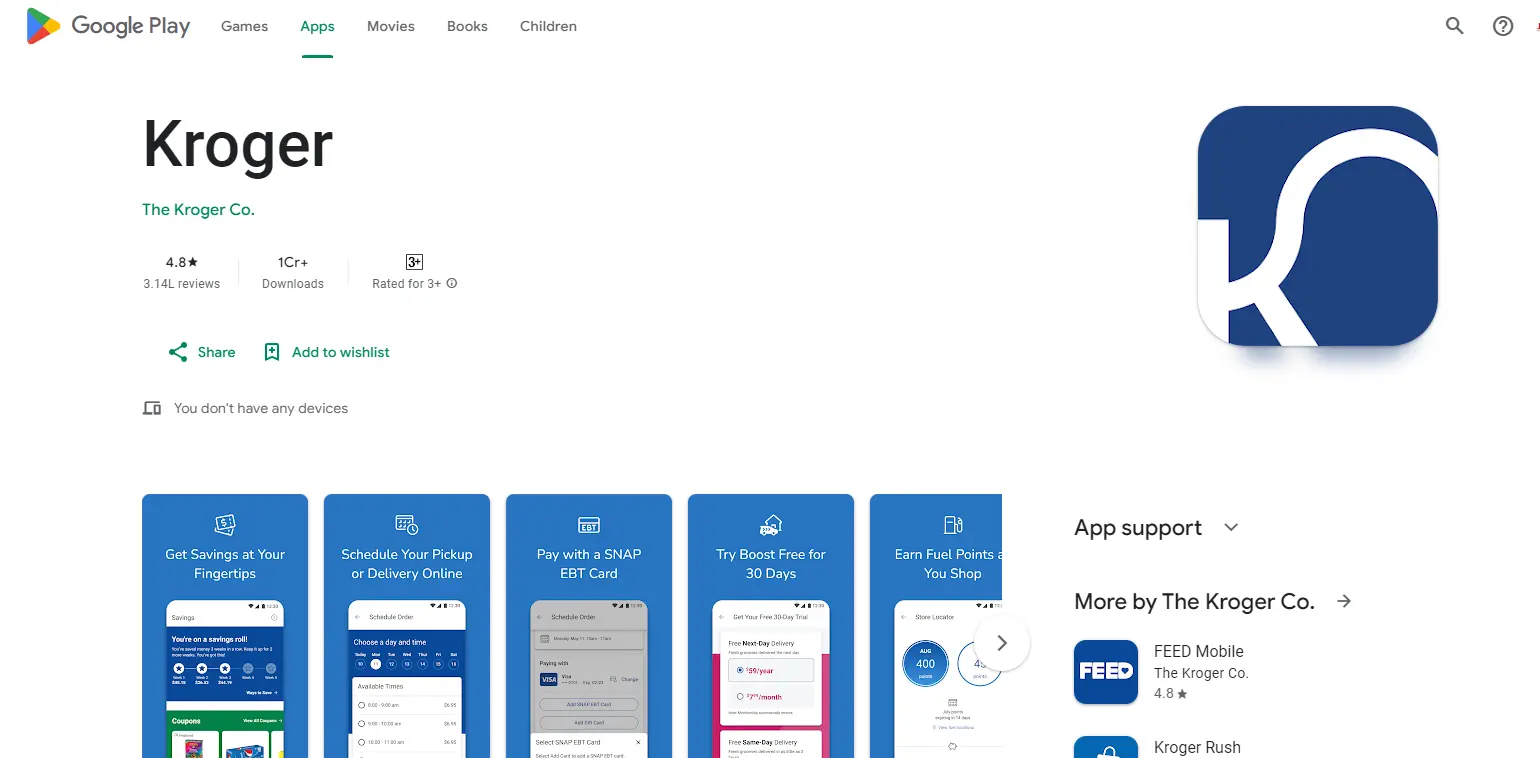
Being a well-settled business, Kroger is considered one of the greatest apps like Instacart, providing a range of perks to full-time workers. It invites people to various opportunities where they can excel professionally. Users need to compare the cost and convenience before actually placing an online grocery order via Kroger. There are no separate pickup pickup charges for Boost members if they place an order above $35; for other users, the set cost is $4.95. For planned preferences, costs of delivery start from $9.95 and might soar depending on the chosen delivery schedule. The minimum purchase amount is $35, which is on the higher end than other apps similar to Instacart might possibly charge. Beyond groceries, it also serves its clientele with pharmacy services and fuel centres. Exceptionally, Kroger works in partnership with initiatives such as Zero Hunger-Zero Waste, reflecting its sustainable move. It stands still as a prominent grocery delivery player to date.
5. FreshDirect
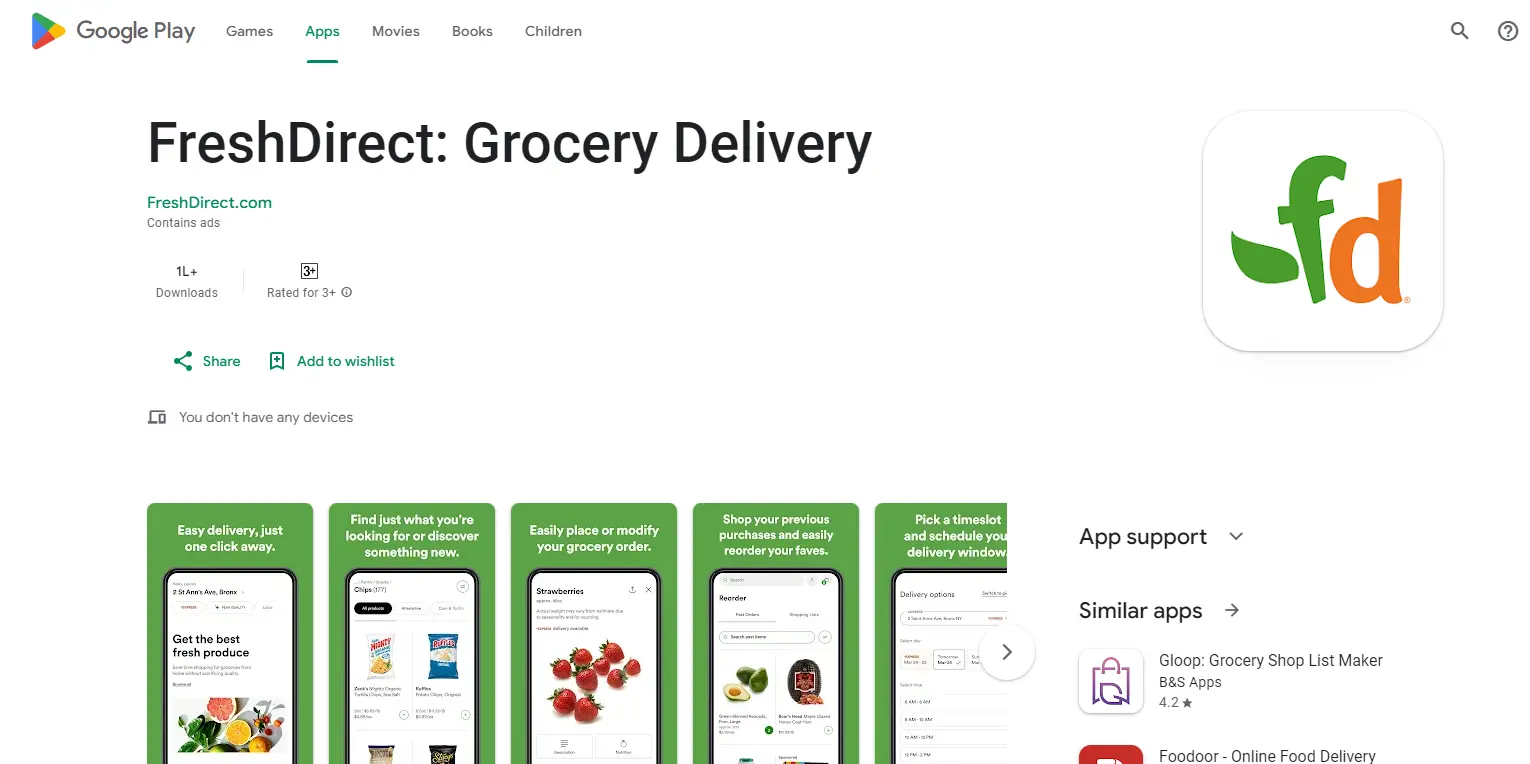
FreshDirect is one of the grocery delivery apps like Instacart that customises the offering of fresh grocery produce and meal kits to the user’s home. FreshDirect is a pioneer in the grocery delivery department and is a time-saving alternative to Instacart and other traditional services. It delivers fresh items extracted from local farms and common industry players. It boasts about maintaining high-quality control protocols and making sure users get unprocessed goods. While catering to garden-fresh items, its key focus is freshness, which attracts environment-friendly and health-conscious consumers who look out for organic foods. A unique component of FreshDirect that makes it different from Instacart is its independent operation of fulfilment centres and warehouses. It allows better control over quality, managing inventory, and efficient delivery. It also caters to users who have tight schedules with quick-to-make meal kits.
6. Dumpling
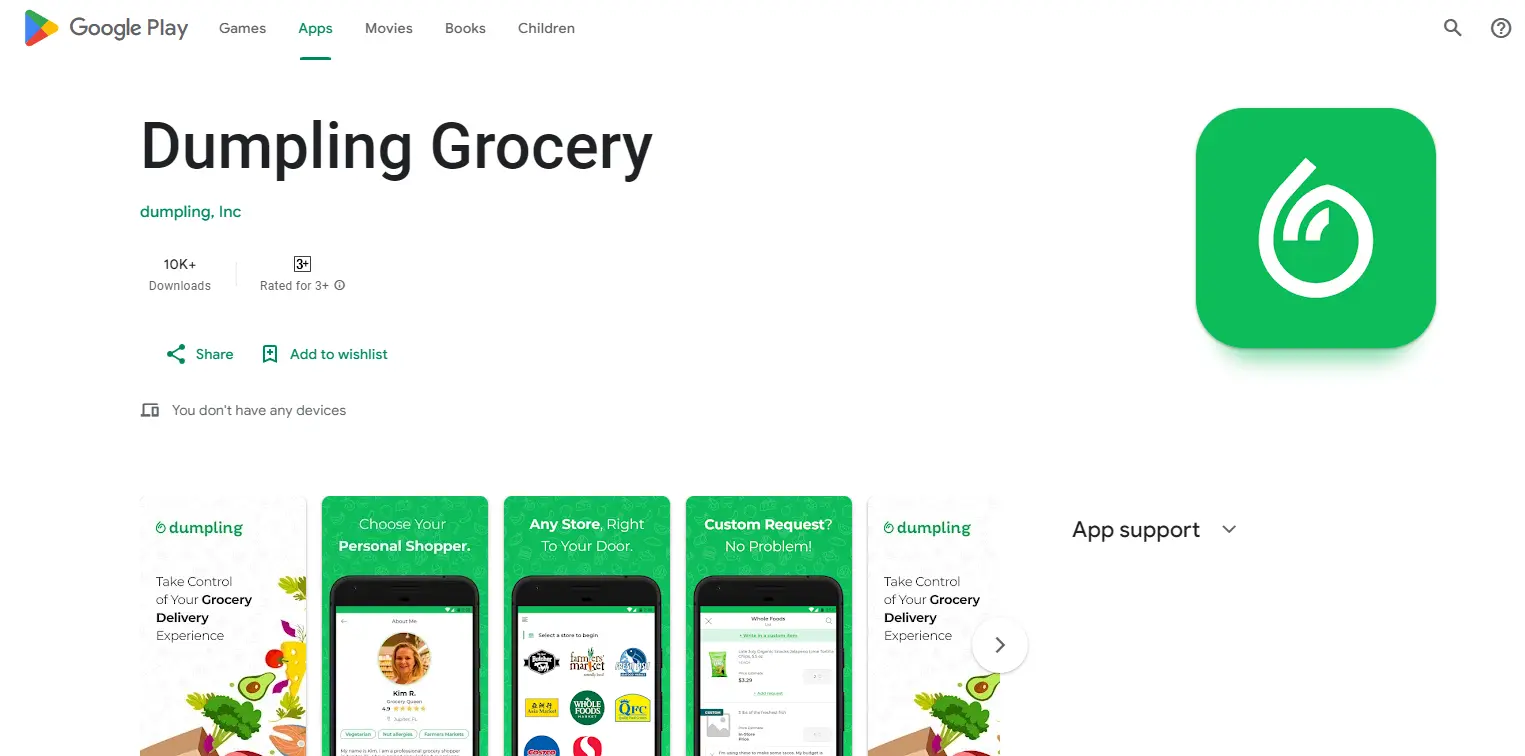
Akin to other apps like Instacart, it is an innovative service that inspires shoppers to manage their tailored grocery businesses. Established in 2017, Dumpling is a substitute for old grocery services like Instacart by building a direct connection between users and shoppers in the local communities. Shoppers can create their own brand and connect with the users. Dumpling shoppers are flexible in customising the costing structure, which shows that the customers can seek competitive prices and negotiate for the best deals. Users are free to choose their personal shopper based on expertise and reviews. Dumpling assists shoppers in creating a loyal user base and maintaining long-lasting connections with clients. Though Dumpling might have yet to achieve equal brand recognition as Instacart, it is competitive enough due to its unique business model and focus on personal connections.
7. GoPuff
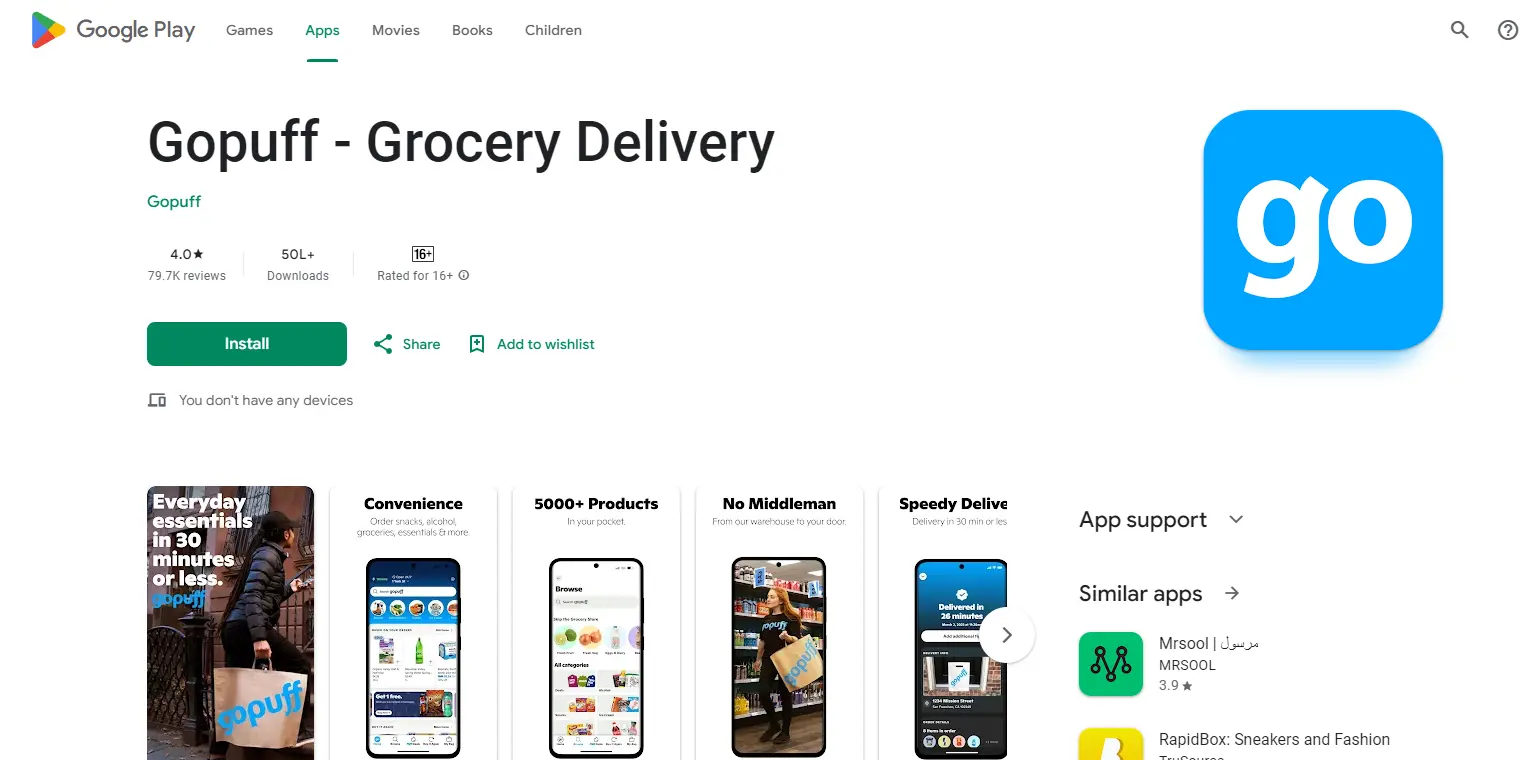
GoPuff is one of the leading apps like Instacart, which specialises in delivering store goods such as beverages, snacks, and household and personal care items. Gopuff is inclined towards focused product selection. On the one hand, Instacart deals with a broad range of retailers and shops, and Gopuff is exclusively linked to convenience shop products. GoPuff runs a bunch of micro-fulfilment centres situated in US cities. Ultimately, this allows Gopuff to deliver items as soon as half an hour, ensuring rapid delivery of essentials. GoPuff has expanded its roots via partnerships and acquisitions. A notable subsidiary is BevMo, which operates as a beverage merchandiser. It empowers its place as one of the top Instacart alternatives in the industry as an alcohol supplier, adding more options to its existing collection of goods.
8. Vons Delivery
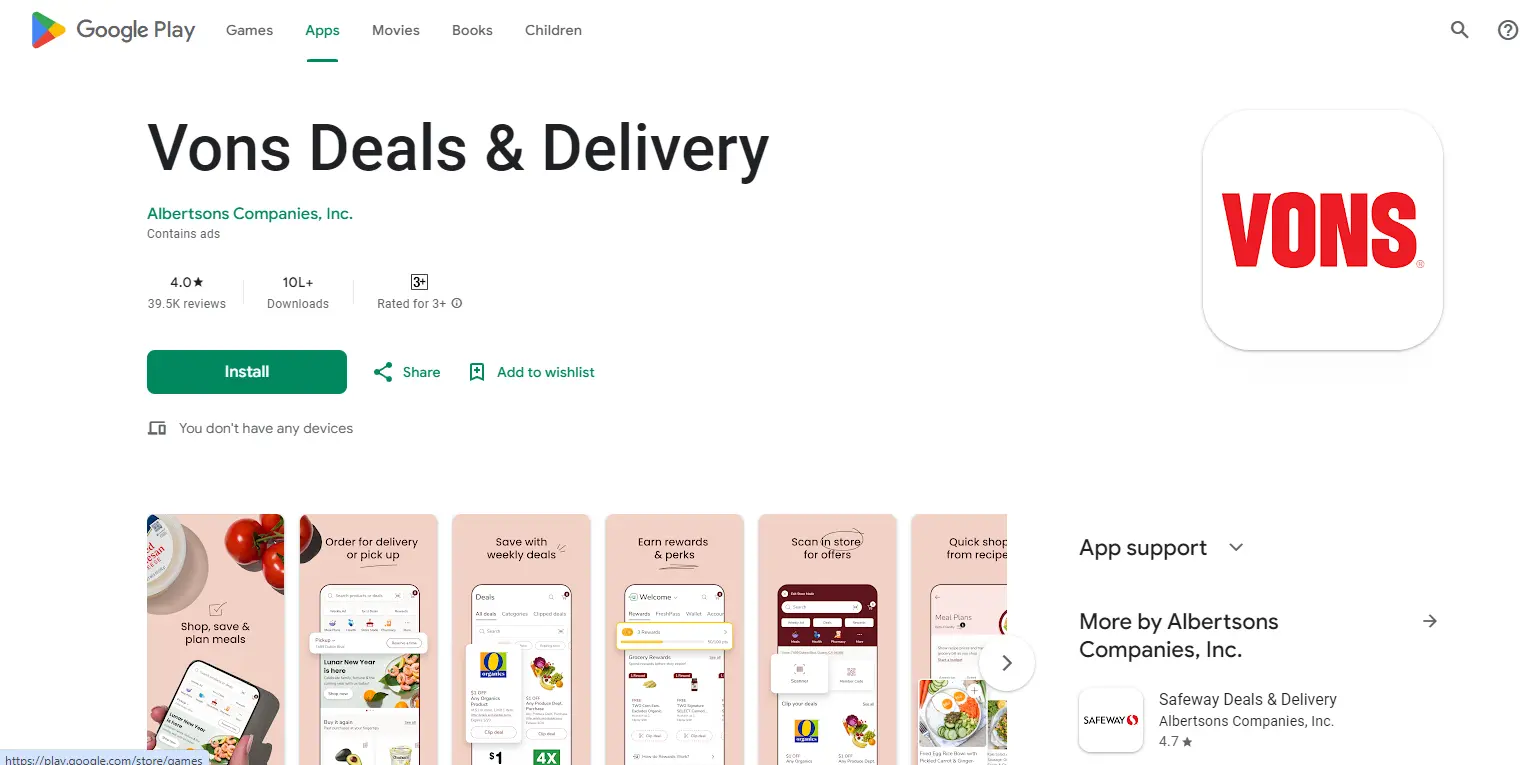
A group of Albertsons Companies, a well-known grocery firm across the United States, owns Vons Delivery. It is majorly operational in Nevada and Southern California. To meet customer dynamic needs, it hosts a range of offerings, including home delivery, curbside pickup, and in-shop shopping. Being one of the competitive apps like Instacart, it is closely linked to the brand and its stores. It leverages the inventory and infrastructure to meet consumer demands. It started a loyalty program named “Vons for U” that provides customised discounts to subscribers. The loyalty scheme retains users and rewards them for relying upon Vons Delivery over other delivery services like Instacart. Where Vons Delivery is restricted to Nevada and California, Instacart collaborates with huge national chains as well.
9. Mercato
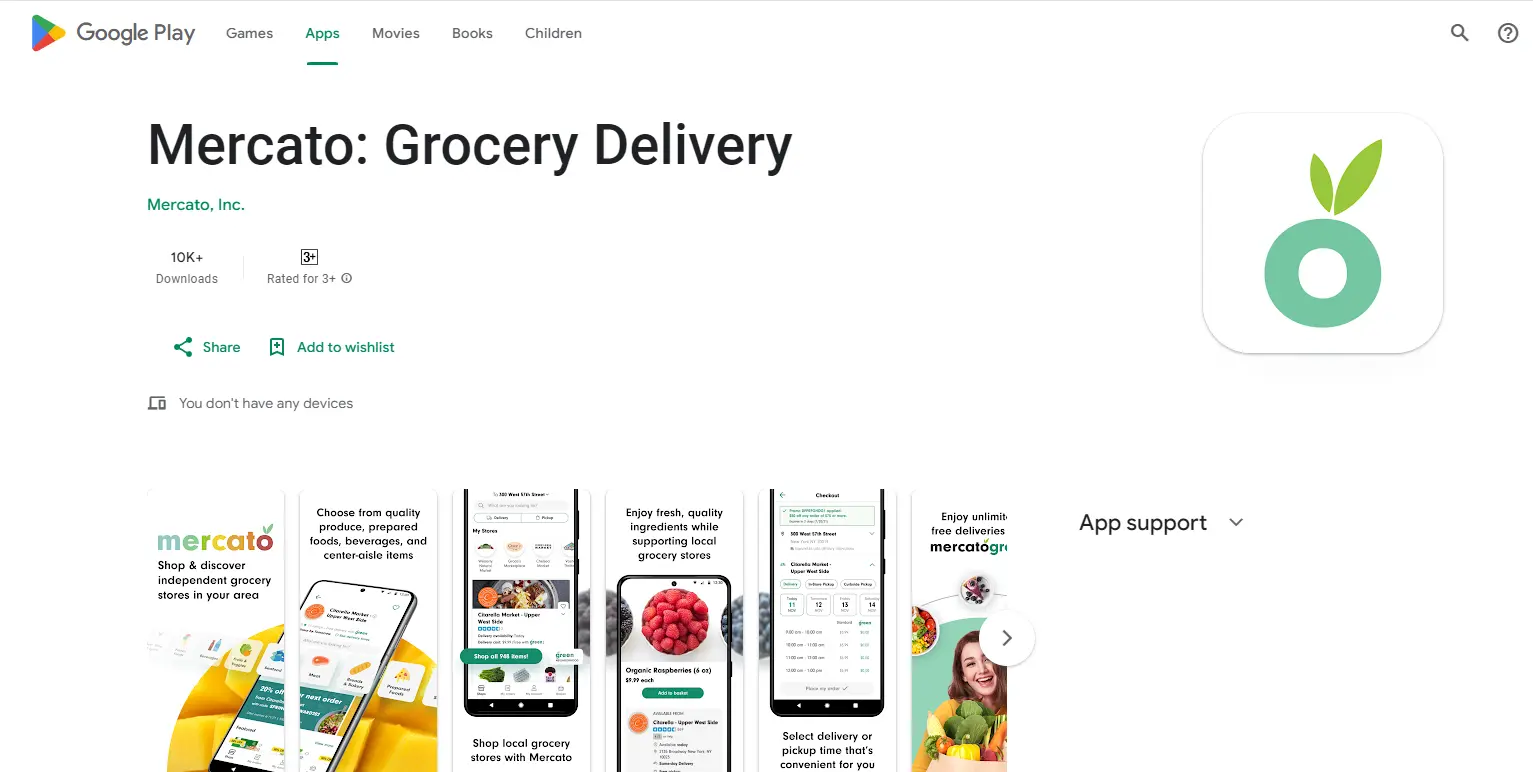
Mercato is a virtual app like Instacart that associates customers with independent stores. In addition to helping small companies in their communities, Mercato strives to give clients access to a large variety of locally produced, high-quality products. Mercato, in comparison to Instacart, prefers partnering with stores present on a smaller scale. This, in turn, introduces a more informed shopping experience along with extended support to local economies. Users can navigate via a number of products and generate shopping lists. It also delivers goods on the same day and on time. Mercato is eco-aware and strives to work on sustainable practices. It eliminates food waste by sourcing fresh items. Also, it packs its materials in an eco-friendly manner to minimise harmful impacts. In order to reduce their carbon footprint, customers can choose reusable packaging and schedule delivery.
10. Shipt
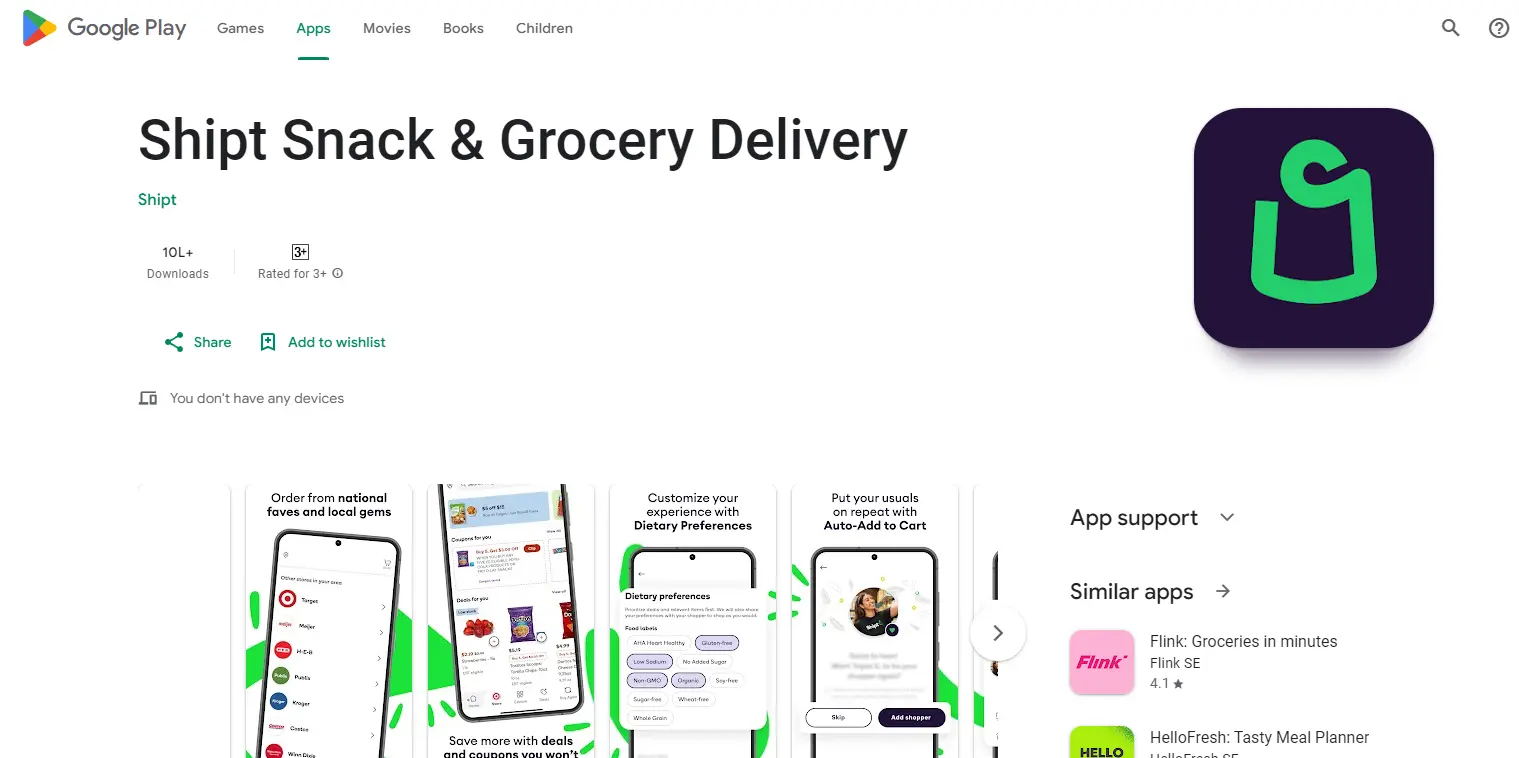
Shipt is one of the paramount apps like Instacart. It provides same-day delivery from a number of retailers for groceries, household necessities, and even alcoholic beverages. Shipt’s mode of competition with Instacart is the membership model. Users can subscribe to the app’s monthly or yearly plan that permits them free deliveries above a certain price. It has a vast network of 100,000 shoppers who fulfil the delivery requirements of the users. It was later taken over by Target Corporation, which raised its market presence and competitiveness similar to shopping apps like Instacart. Target has embedded Shipt in its app and website, easing the shopping process. Shipt has a distinct advantage over Instacart thanks to this seamless integration, as it has direct access to Target's vast product selection and devoted customer base.
Business Model of Instacart
Connecting clients with personal shoppers who complete and deliver their shopping orders from nearby stores is the core of Instacart’s business strategy.
Revenue Streams:
Delivery Fee
Instacart charges a fee for every order placed via the app. This is driven by factors like order size, chosen delivery time, and location of the user. Customers can go with the Instacart Express service, which offers endless deliveries on an annual or monthly basis.
Service Fee
Along with the delivery fee, Instacart charges an additional service fee. It covers operational prices relevant to maintenance and fixtures in the platform. Elements like time of delivery and order size influence service fees.
Advertising
Instacart makes money via partnerships and ads with CPG firms and reputed grocery brands. These businesses pay Instacart to advertise their goods on the Instacart app in various ways, such as sponsored listings and prominent placements. This improves sales and product visibility for these brands and brings in more money.
Instacart Enterprise
For those who want to serve corporations and organisations over individual customers, Instacart provides a different service known as Instacart Enterprise. Offices, colleges, and other organisations can use this service to get bulk grocery delivery assistance. Revenue for this model is generated from service fees or delivery fees.
Operational Model
Instacart serves as a middle platform for connecting users and shoppers with the stores. Customers use the Instacart website or app to place orders, choosing products from nearby retailers who are working with the service. Following that, Instacart customers are given these orders. They physically visit the stores, choose the items, and deliver them to the client's designated locations.
Market Position
Instacart has experienced a surge amidst the COVID pandemic when demand surged for grocery delivery. As a result of partnerships with significant grocery chains like Costco, Kroger, and Walmart, among others, the company has extended its services to thousands of cities worldwide. Instacart has marked its leadership position in the grocery delivery service business with its wide-ranging reach and well-made partnerships.
Future Directions for Grocery Delivery
Technological developments, changing consumer preferences, and shifting business models are all expected to bring about major changes in the grocery delivery industry and apps like Instacart Shopper in the future. Important patterns comprise of:
-
Machine learning and Artificial Intelligence have restructured this sector. With the assistance of predictive analytics, retailers can perfectly estimate demand, tailor the shopping experience, and manage inventories. Robotics and self-operating warehouses regulate order fulfilment, cutting off delivery time and overall operational prices.
-
Ozone-friendly users are pushing for greener and more eco-friendly options. Initiatives such as bicycle couriers, electric vehicles, etc., are common nowadays. Moreover, firms and apps similar to Instacart are employing sustainable packaging methods to lower threatful impacts on nature.
-
Hyperlocal delivery models, in which goods are locally sourced and distributed in the minimum span, are gaining prominence. This method helps regional companies while cutting down on delivery timeframes.
-
To meet the quick delivery need, retailers are focused towards building dark stores that are private. On the other hand, micro-fulfillment centres are primarily situated in city areas and allow speedy processing of virtual orders and effective delivery times.
-
Innovative solutions like smart fridges and temperature-regulated lockers ensure that the items are fresh for the term they are reserved.
-
Merchandisers use data to custom-tailor item suggestions, present curated shopping lists, and offer a smoothly running online interface. Audio-controlled shopping via smart assistants is also common at present.
-
Retailers collaborate with external delivery services and tech organisations to improve their logistic mechanisms. When such partnerships are in place, innovations in technology can be adopted and scaled more quickly.
Conclusion
So, you had an overview of apps like Instacart to generate extra bucks. Everyone in this busy life needs groceries, and thus, the online grocery sector holds good scope. Any app that is feature-rich and robust with a well-defined Unique Selling Point (USP) is capable of taking control of the market competition. Grocery delivery app development is the fundamental part of coming up with a functional app, and it serves as a front store for users to interact with. Based on the above list of grocery apps, relying on an app is totally determined by priorities and requirements. If you want rapid delivery and a vast range of items to opt from, Amazon Fresh is suitable. Shipt stands among others for customised services and express delivery. If you are organic-centred and prefer fresh garden and speciality products, Thrive Market is an ideal option. Each app is known for its pros and cons, and trying each service for distinct needs can aid you in recognising which will suit you best. As this landscape evolves continuously, the apps adjust to user demands. Whether you are innovation-driven or looking for eco-friendly options, grocery delivery applications are flexible enough to adapt to this hectic world.





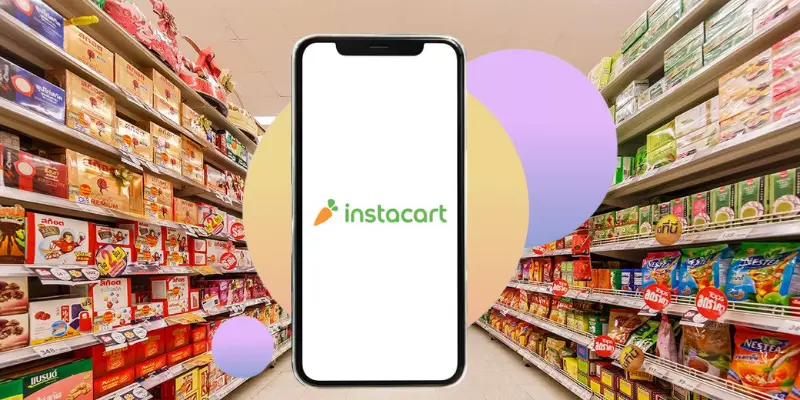

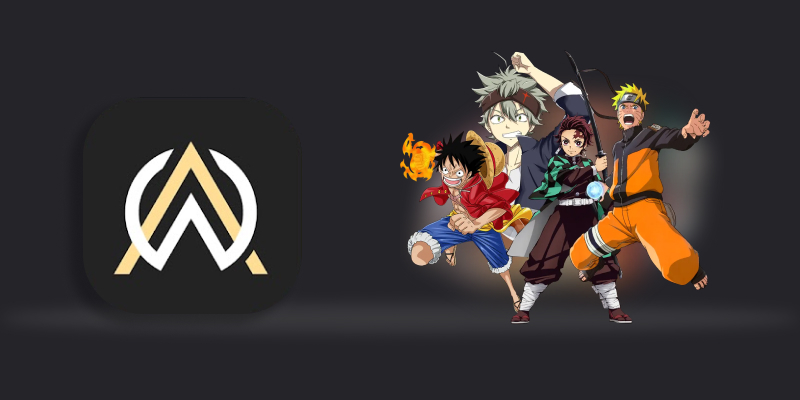
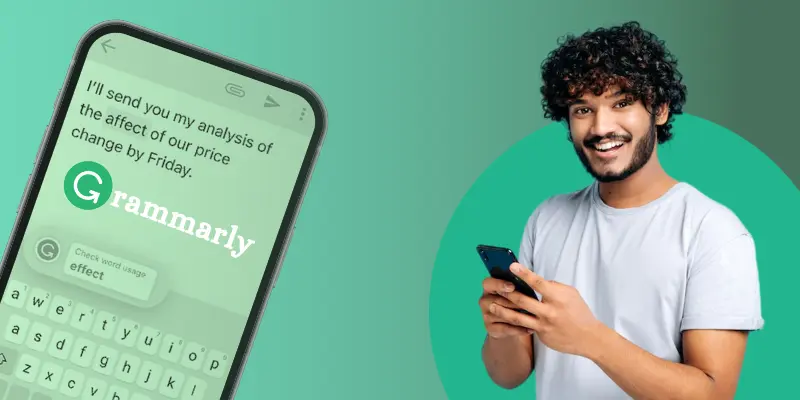



Share this blog